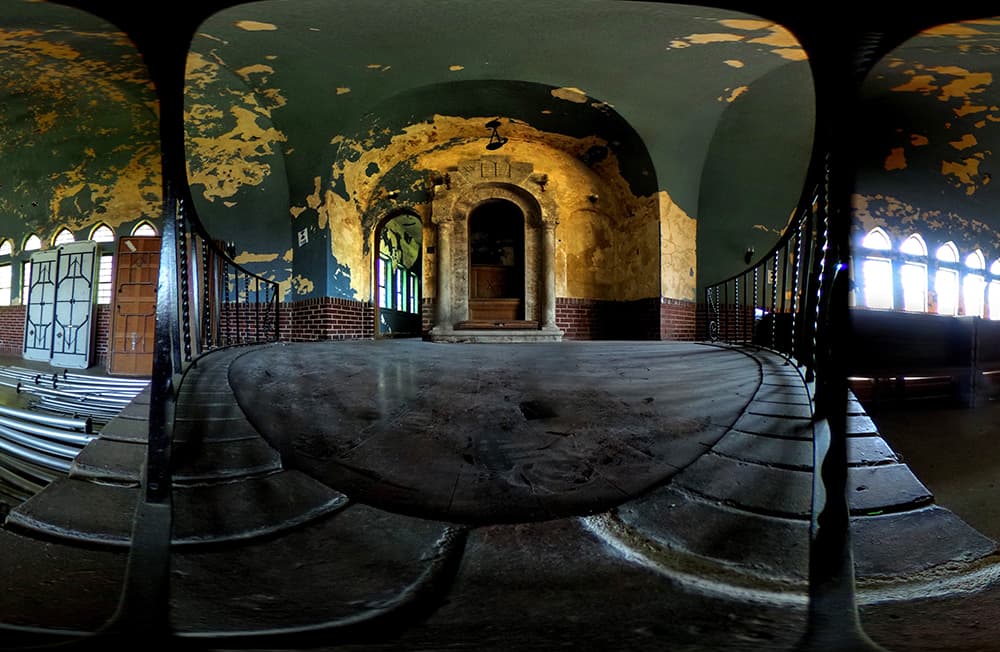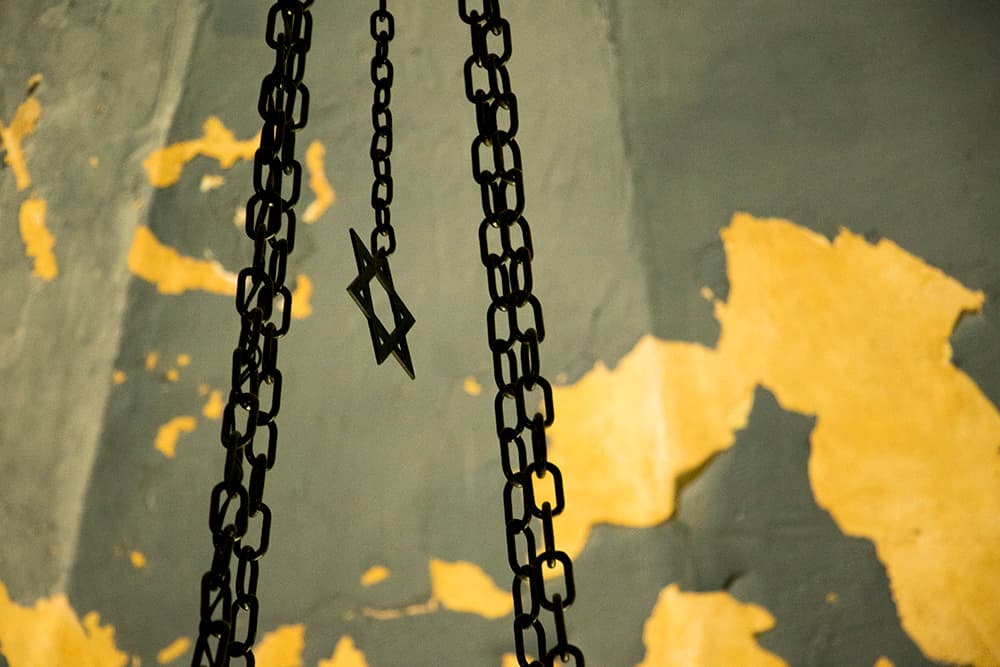
The stereotypical image of Wild West settlers probably doesn't include Yom Kippur services. Nonetheless, Jewish immigrants were part of those first colonial population booms that shaped the city and state -- and they left their mark on Colfax Avenue.
In fact, the original viaduct that bridged West Colfax into downtown was known as the "Jewish Passover," according to University of Denver historian Jeanne Abrams. The nickname spoke to the dense population of immigrants who lived underneath the elevated stretch of road.
Part of that community still stands today: It's the cluster of brightly painted buildings beneath Colfax Avenue amid the parking lots of Mile High Field Stadium -- and that's only part of the Jewish legacy here.
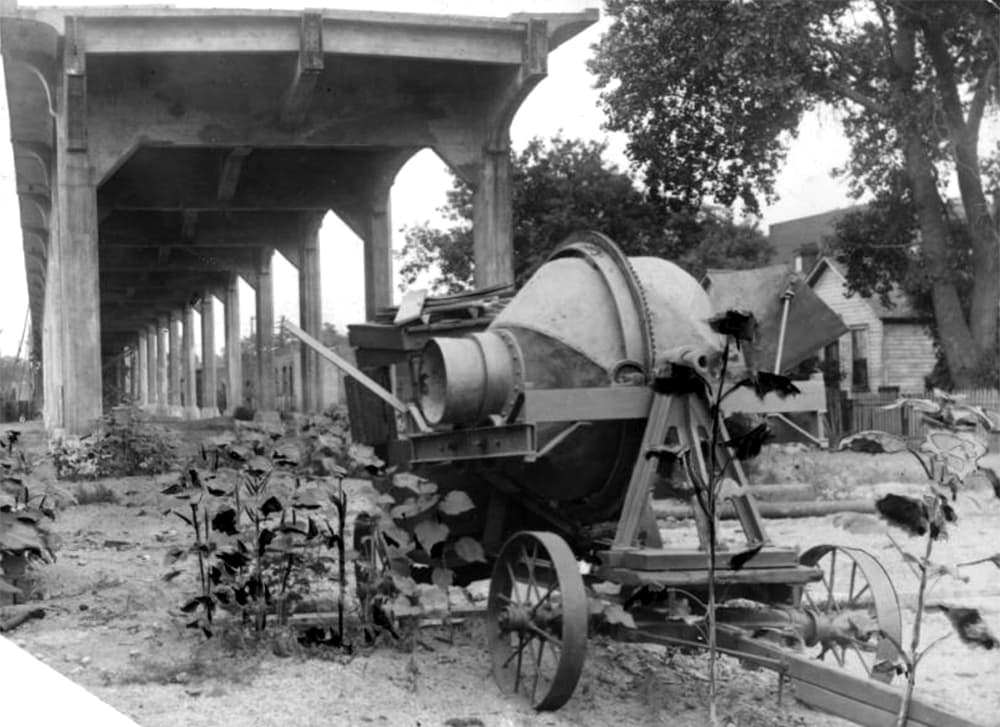
When the Colfax viaduct began construction around 1917, a Jewish enclave had amassed in the lowlands by the river.
Many of those settlers had previously tried farming in Wild West communities like Cotopaxi, a frontier town near Cañon City that failed in 1884. When the dry soil proved to be an impossible obstacle for the immigrants-turned-farmhands, some relocated to budding Denver.
For Alan Grossman, a lawyer with deep roots in Denver's Jewish communities, the pioneer spirit embodied by his ancestors seems perfectly fitting.
“Work is honorable," the Torah scholar told Denverite as he loosely quoted a psalm. "He who benefits from the work of his own hands will be blessed in this world and it will be good for you in the next."
The West was a chance for Jews to command their own destinies.
Grossman's own family arrived in Denver around the turn of the 20th century. His grandfather, Abraham Grossman, owned a haberdashery downtown; the elder Grossman's picture appears in Jeanne Abram's book, "Jewish Denver 1859-1940.”
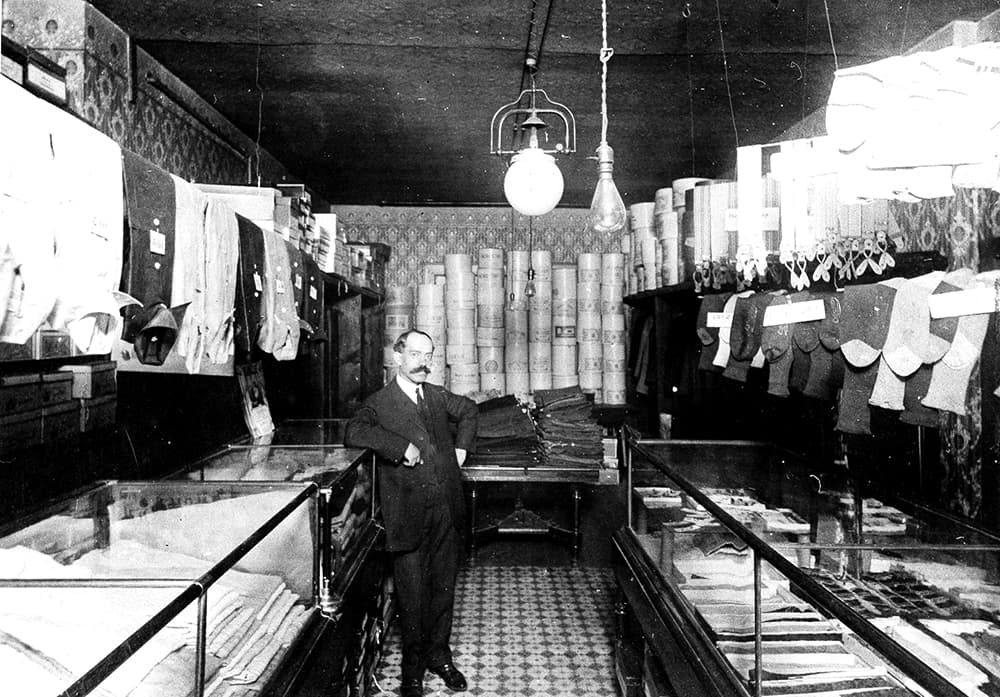
Jewish settlers came to the state as far back as the 1850s, Abrams wrote.
“Frustrated by centuries of discrimination," she wrote, "many Jews thrived in the generally benign and welcoming environment of the American West. The absence of anti-Semitism and the fluid social structure in the newly established Colorado boomtowns enabled many of the Jewish pioneers to enter politics, society and business with more ease than the Jews had known in other areas."
Before 1900, Abrams said, Colorado's Jewish population had grown to 1,500, out of a total state population of 500,000. By 1907, she wrote, the population had multiplied to 6,500, with about 5,000 of those people living in Denver.
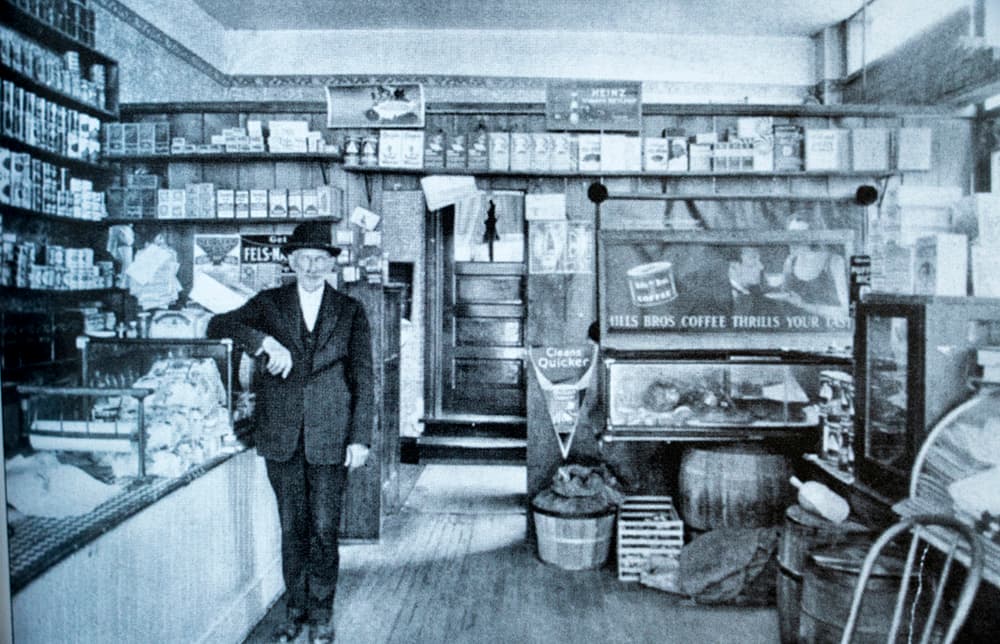
The community around the Colfax viaduct soon filled with bustling markets and groceries that were often compared to New York's Lower East Side, Abrams told Denverite.
There's not much bustle left down there today -- except on Broncos game days.
Under the viaduct stands a tiny main street that now serves as tailgate central for professional football games. Among the odd cluster of buildings is Brooklyn's, the bar that operates out of the spired building on the corner. It was built in 1896 as a grocery and delicatessen.
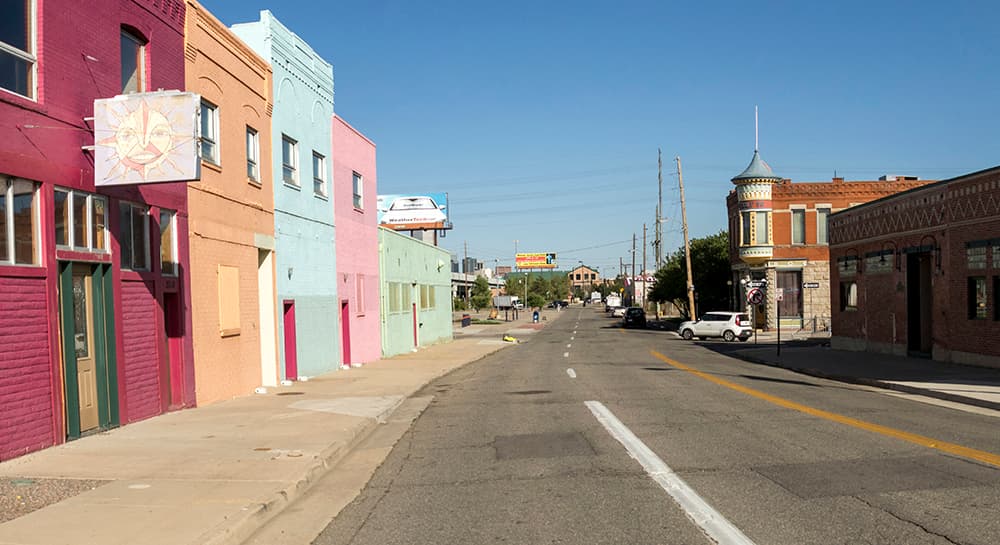
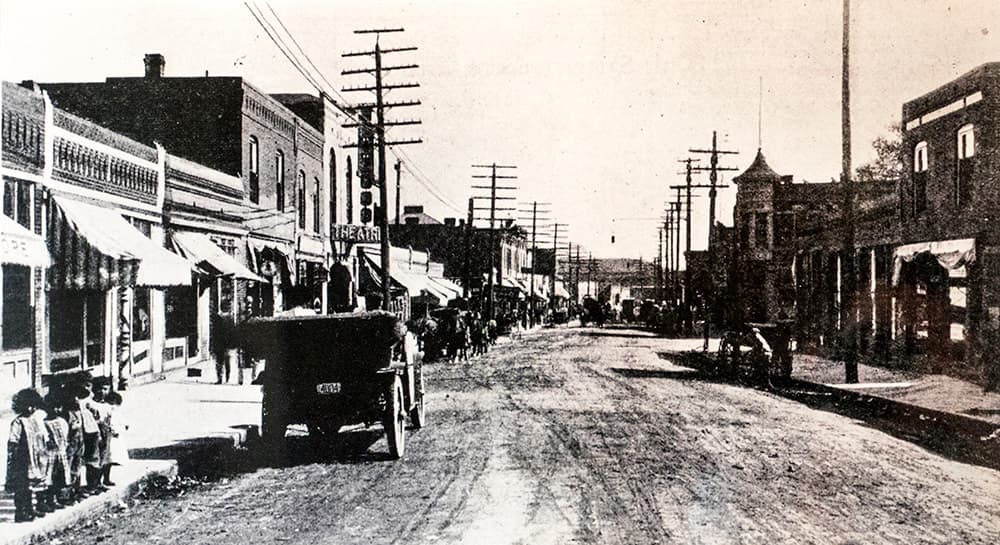
As the city grew, two Jewish groups helped shape Denver on both sides of the viaduct.
Over time, Orthodox residents began to shift west to the neighborhoods they would inhabit into the present day. As that faction moved west, Reform Jews moved east, eventually to the Hilltop neighborhood.
Long-standing Jewish institutions can still be seen just off of East Colfax, though the buildings now are used by Christian congregations. You can actually attend services at Temple Emanuel at 16th Avenue and Pearl Street, built as the third home of Denver's oldest Jewish congregation and now operating as the Denver Community Church, and at Temple Beth Abraham, which now serves the Church in the City congregation at 16th and Gaylord Street by City Park.
The growth of Denver's Jewish communities has a connection to tuberculosis. Around the turn of the century, Colorado became a magnet for TB patients seeking dry air to relieve their symptoms. Jewish doctors founded institutions that would allow their neighbors to seek treatment. This led to the creation of the respiratory center at National Jewish Health, the Reform community's hospital to the east.

On the west side of town was the Jewish Consumptive Relief Association. Founded by and named after Russian immigrant Dr. Charles Spivak, the medical campus began as its own town.
Today, the old main street of Spivak, Colorado, is the center of campus for the Rocky Mountain College of Art and Design, located behind Casa Bonita. Its old sanatorium now serves as gallery space and its post office houses administrators. Its old dining hall, now RMCAD's library, is full of historic photos showing life more than 100 years in the past.
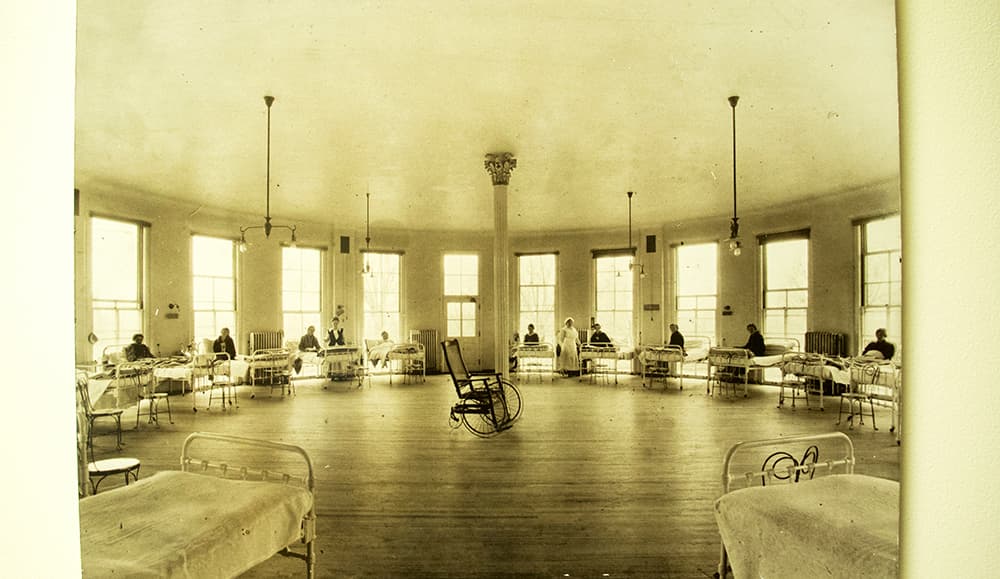

A synagogue also was built in Spivak. Rebuilt in 1925 after the original structure burned down, the house of worship was in use at least until the 1960s. When groundskeeper Regan Headrick began working on the campus in 1996, before RMCAD bought it, Torah scrolls were still being stored inside.

Headrick loves this building. He says he doesn't exactly believe in ghosts, but in here, people feel something.
Today you can walk around the synagogue on campus and peek inside an old tent that once quarantined a tuberculosis patient. For an inside view, you can check out our 360-degree image:


